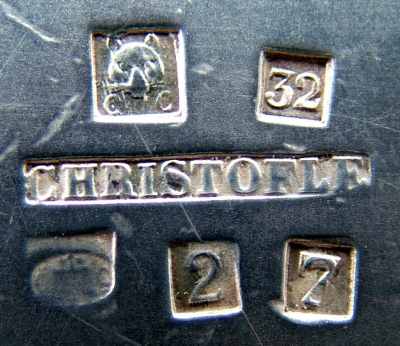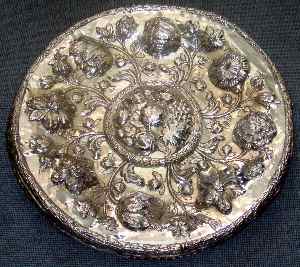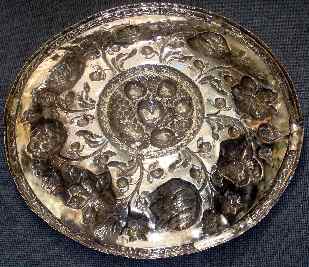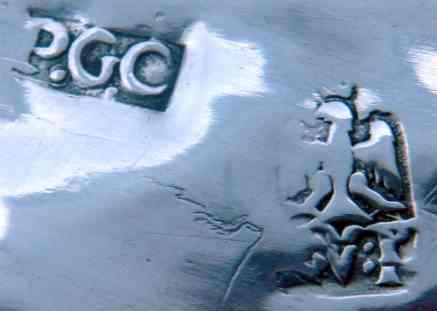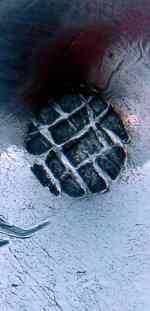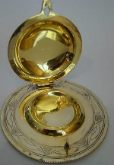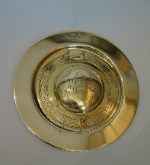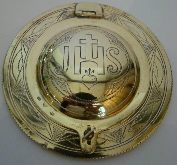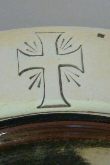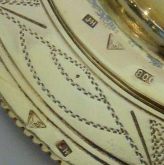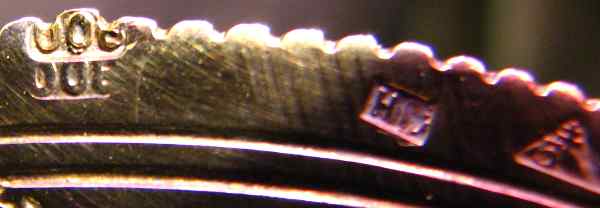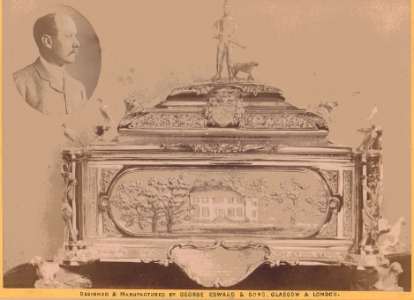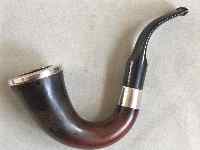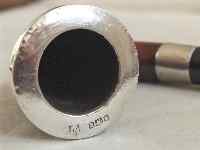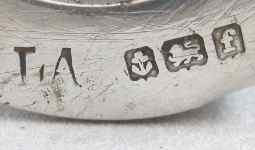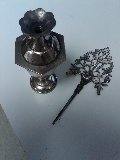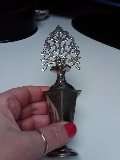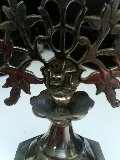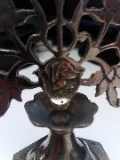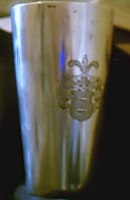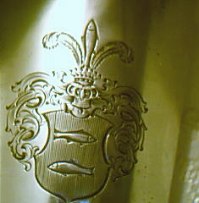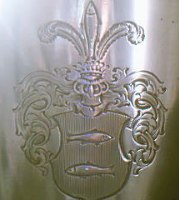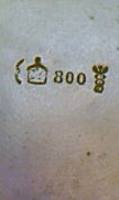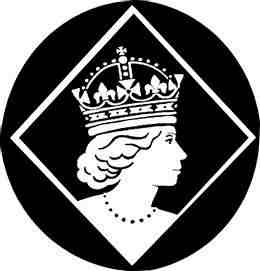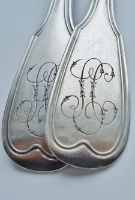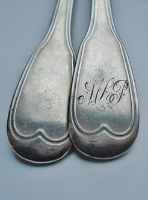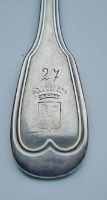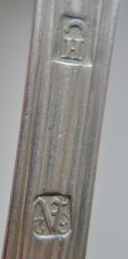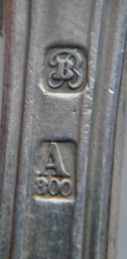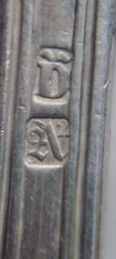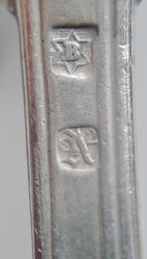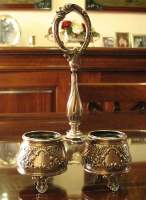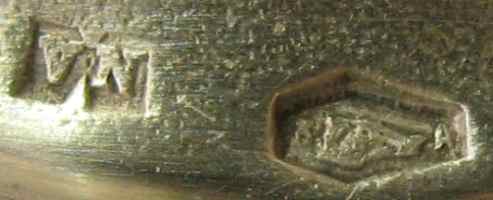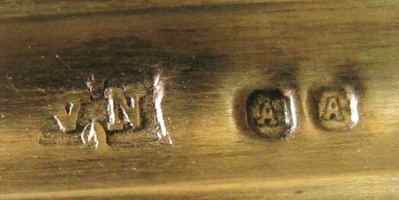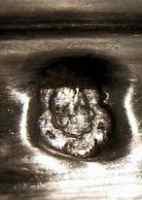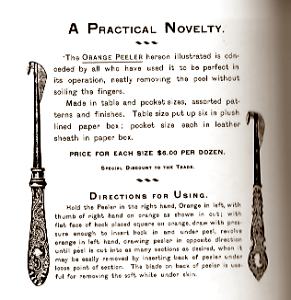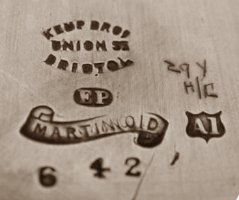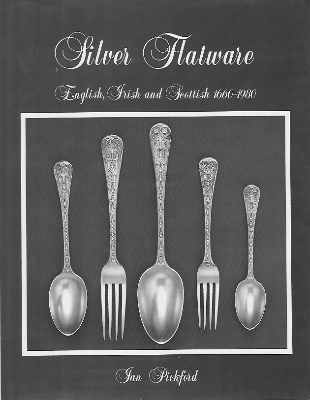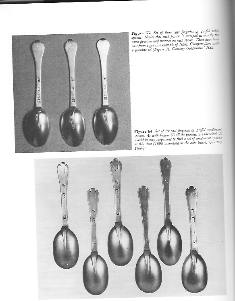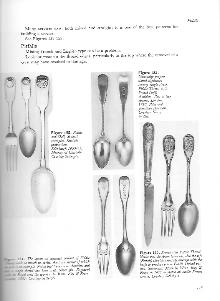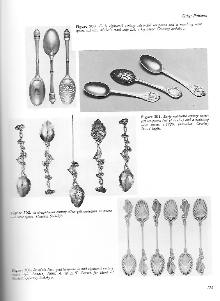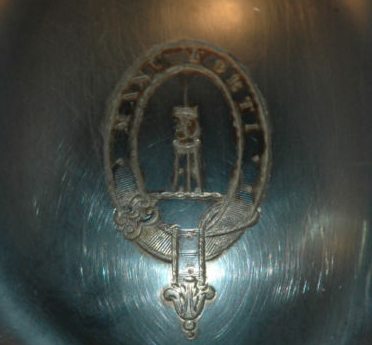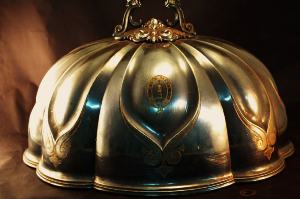 newsletter
# 82 March 2011 newsletter
# 82 March 2011www.ASCASonline.org SITE MAP email: silverassociation@yahoo.it |
||||||||||||
New membersWelcome to new ASCAS members:Joy Aumiller - USA
|
|
top page -
page map |
Members' Window # 82
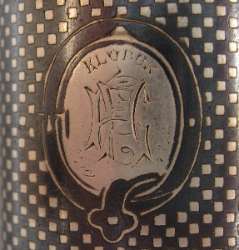
C. Bruno Bruni presents:
|
Mail to ASCAS: e-mail silverassociation@yahoo.it
Luis Castelo Lopes writes:
... Please find here some photos of a silver salver (diameter 56
cm. - 1926 grams) which bears the hallmarks of Palermo, could
you please confirm that and tell me if the mark is from the 17th
or from the 18th century?
In my opinion there is a Dutch or German influence what do you
think?
Many thanks
Best regards
Luis Castelo Lopes
The mark belongs to Pietro Guarnuto, Console degli
Argentieri (Alderman) from 1/7/1667 to 26/6/1668.
I do not know if there was a German influence, but a 17th
century Nurnberg plate with floral decorations is present in a
Sicilian museum.
Giorgio Busetto
John Alejandro writes:
... I would like to seek your help in getting more information
about an item I recently acquired. The photos are attached. It
is a sterling silver pyx and paten that have European hallmarks.
The seller stated that it came from a Belgian convent, but I
have no way of independently verifying this. I would like to be
able to find out the year, the maker, as well as the meaning of
the hallmarks. It would also be good if anyone can provide a
history about this item.
The large paten measures 6". Removable pyx at the center
measures 4" in Diameter. Holds up to 1.5" diameter sacred hosts.
The pyx (set on the center) and the paten are separable. Both
have the European hallmarks for silver and gold.
Thank you very much.
Regards,
John Alejandro
Any suggestion by ASCAS members will be welcome
Giorgio Busetto
***ANSWER PUBLISHED IN APRIL NEWSLETTER***
Ronald Dewar writes:
... I would very much appreciate your help in identifying this
silver casket. The photograph comes from an album belonging to my
grand / great grand parents and I am trying to find out what the
connection there is to this casket.
I hope you can tell me who it was made for and what occasion it
marks .
Ronald Dewar
The casket is described as "DESIGNED & MANUFACTURED BY
GEORGE EDWARD & SONS - GLASGOW & LONDON"
George Edward & Sons was a retail business established in
Glasgow in 1838.
The firm opened (probably in 1874) a London branch at Mansion
House Buildings, 19 Poultry, Cheapside.
In 1925 the firm was converted into Edward & Sons Ltd and was
still active in 1963 at St. Vincent Street, Glasgow. Some years
later it was sold to Mappin & Webb Ltd.
Presumably your photo refers to the period 1874/1925.
Giorgio Busetto
Piero Eduardo writes:
...Dear Giorgio, this is a time fortunate enough to continue my
"research", as I found this sea foam calabash pipe that I submit
to your attention in order to identify the maker's mark LA (without
frame), Birmingham 1905. On your site I learned that a maker
mark LA is identifiable with Lawrence Aitchison, mid 19th c. But
this silversmith, if I have not misinterpreted your information,
was active in Glasgow instead of Birmingham. Therefore, I trust
in your help for the identification of the mark on my pipe.
Best regards
Piero Eduardo
I'm sorry, but, in this case, I'm unable to identify the
maker's mark.
The literature about Birmingham silver hallmarks of the early
20th century is scarce, but I trust in the help of ASCAS members
for the identification of the mark (a possible addition to my
list of
Tobacconists, Pipe Makers and Pipe Mounters hallmarks in
silvercollection.it.
Giorgio Busetto
***ANSWER PUBLISHED IN APRIL NEWSLETTER***
Joy Aumiller writes:
...I have an unusual silver bottle that I have been trying to
identify for many years.
I purchased what I thought was a silver perfume bottle at an
antique store in PA. When I got the bottle home, I discovered it
had many unusual features. I have had the bottle for almost 10
years and I have never been able to identify the markings or
even if it is actually a perfume bottle. From time to time, I
search books and the web...but this is the first time I have
actually "reached out" for help.
I believe the bottle itself is plated because it has a gold tint
on the underside of the base.
The finial/dauber has markings on both sides, and seems to be
silver. The threads that screw the top to the bottle also seem
to be hand made. There is a small mark on the top of the bottle
where the finial lines up, exactly, when the top is on.
I have never been able to find any markings even close to those
on the finial.
The bottle measures about 5 inches tall and 2 inches wide, and
weighs about 100 grams empty. The strangest feature of all is
the fact that the bottle is filled with a fine, shiny, black,
powder (about 25 grams).
I am thinking the bottle may be some kind of jewelers tool...? I
really don't know, but I no longer think it is a perfume bottle.
Any tips you might have would be truly appreciated.
Sincerely,
Joy Aumiller
Suggestions are needed
Giorgio Busetto
***ANSWER PUBLISHED IN APRIL NEWSLETTER***
David March writes:
...Dear Giorgio, Could you or ASCAS members help me with the following item?
It is a silver beaker. I was told it originated in Poland (belonging to a nobleman) though it
evidently has a German hallmark.
I would be particularly interested in any information on the coat of arms.
Thank you very much.
David
***ANSWER PUBLISHED IN APRIL NEWSLETTER***
A PREVIEW OF THE NEW BRITISH COMMEMORATIVE HALLMARK
A special commemorative hallmark has been designed to celebrate
the Queen's Diamond Jubilee.
The mark, depicting a young Queen Elizabeth wearing an oversized
crown, will be available as an optional mark in combination with
the statutory hallmark from 1 July 2011 until 1 October 2012.
Information about contemporary UK hallmarking system is
available at
http://www.silvercollection.it/dictionaryhallmarkingUK.html
Giorgio Busetto
Replies to questions
Pierre Bertrand receives
this answer about his silver flatware
(see February 2011 Newsletter)
Emil Fonfoneata writes:
... In the last newsletter there has been a question of Pierre Bertrand who has several
forks and spoons.
They are all 19th Century made in Belgium, silver standard 2 = 800/1000%.
The first item on the left, silversmith letter H for HUBEN HENDRIK is a silversmith who was
active in Mechelen from 1847 until 1868.
The second silversmith letter B for Bousin-Bonnevie from Brussels active from 1878 until 1911.
The third silversmith letter D for Delheid freres Brussels active from 1862 until 1980.
The fourth silversmith letter B for Bonnevie Emile Adolphe active in Brussels from 1864 until 1878.
They are regular items on the Belgian market.
Emil Fonfoneata
Claudio Morelli receives
this answer about his silver cruet stand
(see February 2011 Newsletter)
Oskar M. Zurell writes:
... Also after an intensive internet-research it was until yet impossible for me to find
any copy of basics of Austrian Assay rules for the time span of 1872 (actually I haven't any
possibility for a local Archive research in Vienna).
So I could repeat only the information on that theme, taken out of Waltraud Neuwirth information:
" 1872, April 1 Act of March 10, 1872, comes into force:
all marks have to include the letter of the Assay Office (pl. 7). The letter alone is
used for smaller components of an object; if it is not possible to strike it because of the
smallness of these components, it has to be placed beside the mark on the main part of the
object."
Source: Waltraud Neuwirth,'Wiener Gold- und Silberschmiede und ihre Punzen 1867-1922', volume I,
page 48; in 2 volumen: ISBN 3-900282-00-5
Oskar M. Zurell
"A PAGE per MONTH"
In this column we present a page
obtained from makers' brochures, books, auction catalogs,
advertising or whatever other printed paper, related to silver,
that may be of interest for ASCAS members.
The images will be published at a "low resolution" level and for
private and personal use only
"A WORD per MONTH"
In this column we
present an abstract from a page of the "What is? Silver
Dictionary"
courtesy of


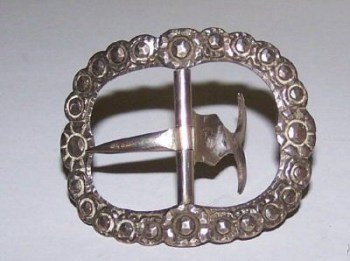
|
BUCKLEA silver buckle is a type of fastener for a belt,
girdle, etc.; first developed in England in the late
17th century, buckles were used there to replace
shoe-laces. Later buckles, of various shapes and sizes,
were used for other purposes, and were sometimes
attached as an ornament to a ribbon worn around a
woman's neck; a buckle is also used, as a fastener or as
an ornament, on some shoes or on a wristband...
more
|
"A SILVERSMITH per MONTH"
In this column
we present marks, information and history of silversmiths and
silver manufacturers.
This column is published under the kind permission of Giorgio
Busetto's website


MARTIN, HALL & CO LTDThe origin of the firm is
in the partnership established in 1820 in Sheffield by
Henry Wilkinson and John Roberts who traded as Wilkinson
& Roberts. Wilkinson left the business in 1836 and in
1846 John Roberts entered in partnership with Ebenezer
Hall (his apprentice in 1836) under the style Roberts &
Hall.
|
"A BOOK ON MY SHELF"
In this column we present books, new
or ancient, dealing with silver in all its aspects (history,
marks, oddities...). This isn't a "book review" but only a fair
presentation of some useful "tools" that anyone may have in the
shelf of his bookcase.
ASCAS members are invited to contribute to this column
(click to enlarge images)
The "book on my shelf" of this month presents:
"A CREST per MONTH"
In this column we present images and descriptions of Crests and Mottoes of British, Irish and Scottish families as engraved on silver items.

Custom Search
Closing our March 2011 edition of ASCAS Newsletter I hope you have appreciated its content.
Your comments, suggestions and advice will be of great help.
My thanks to John Alejandro, Joy Aumiller, C. Bruno Bruni, Ronald Dewar, Jayne Dye, Piero Eduardo, Emil Fonfoneata, Luis Castelo Lopes, Prof. David N. Nikogosyan and Oskar M. Zurell for their invaluable contributions.
Giorgio Busetto
Secretary
ASCAS is a community of people having a common
interest in antique silver.
|
